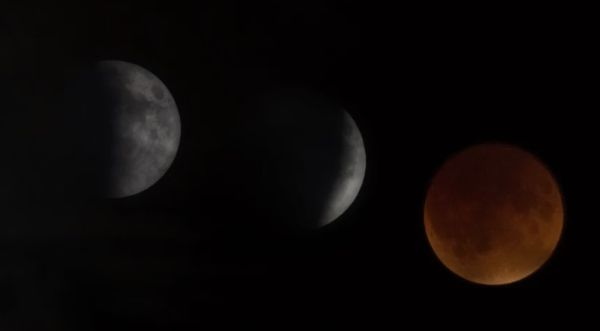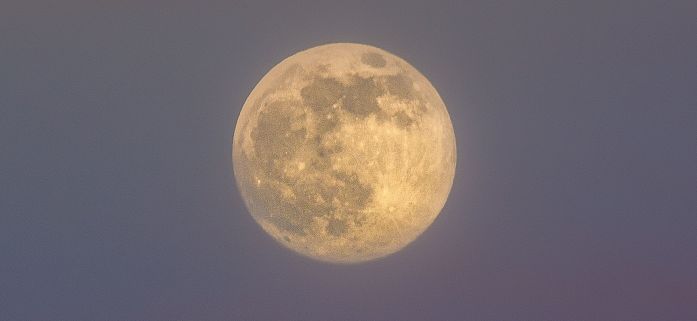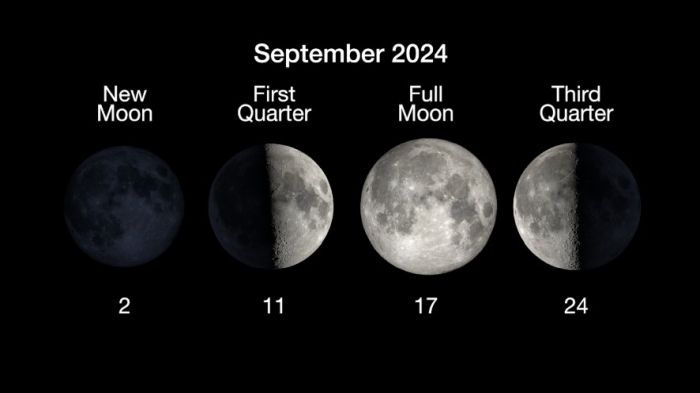
The next September full moon will be a Supermoon and a partial lunar eclipse

The next full moon in September 2024 will also be a partial lunar eclipse, and, a supermoon. This moon also goes by the American Indian names, Corn Moon, Harvest Moon, and, the Fruit or Barley Moon.
–
The next full Moon will be Tuesday night, September 17, 2024, at 10:35 PM EDT. This will be on Wednesday from Newfoundland and Greenland Time eastward across Eurasia, Africa, and Australia to the International Date Line. Most commercial calendars will show this full Moon on Wednesday based on Greenwich or Universal Time. The Moon will appear full for about three days, from Monday evening through Thursday morning.
This event will also be a partial lunar eclipse. The Moon will start entering the Earth’s partial shadow at 8:41 PM EDT. The slight dimming of the Moon will be difficult to notice until the top edge of the Moon starts entering the full shadow at 10:13 PM. The peak of the eclipse will be at 10:44 PM with only the top 8 percent of the Moon in full shadow. The Moon will finish exiting the full shadow at 11:16 PM and the partial shadow on Wednesday morning at 12:47 AM.

This partial lunar eclipsed full moon will also be a supermoon. The term “supermoon” was coined by astrologer Richard Nolle in 1979 as either a new or full Moon that occurs when the Moon is within 90% of its closest to Earth. Since we can’t see new Moons, what has the public’s attention are full supermoons, the biggest and brightest Moons of the year. Although different publications use different thresholds for deciding which full Moons qualify, most agree this will be the second of four consecutive supermoons (effectively tied with the full Moon in October for the closest of the year).
The Maine Farmer’s Almanac first published American Indian names for the full Moons in the 1930s and these names have become widely known and used. According to this almanac, as the full Moon in September the Algonquin tribes in what is now the northeastern USA called this the Corn Moon, as this was the time for gathering their main staple crops of corn, pumpkins, squash, beans, and wild rice.
As the full Moon closest to the autumnal equinox, this is the Harvest Moon. The first known written use of this name in the English language (per the Oxford English Dictionary) was in 1706. During the fall harvest season farmers sometimes need to work late into the night by moonlight. On average moonrise is about 50 minutes later each night. Around the Harvest Moon this time is shorter, about 25 minutes for the latitude of Washington, DC, and only 10 to 20 minutes farther north in Canada and Europe.
Other European names for this full Moon are the Fruit Moon, as a number of fruits ripen as the end of summer approaches, and the Barley Moon, from the harvesting and threshing of barley. As usual, the wearing of suitably celebratory celestial attire is encouraged in honor of the full Moon. And according to our friends at NASA: “Go out and observe the Moon, enjoy this harvest season (including corn, fruit, and sweet potatoes, and honey), remember your ancestors, stay in touch with your parents, and forgive and ask forgiveness.“
–
(Source: NASA)
Posted by Richard Webster, Ace News Today
Follow Richard on Facebook, Twitter & Instagram






